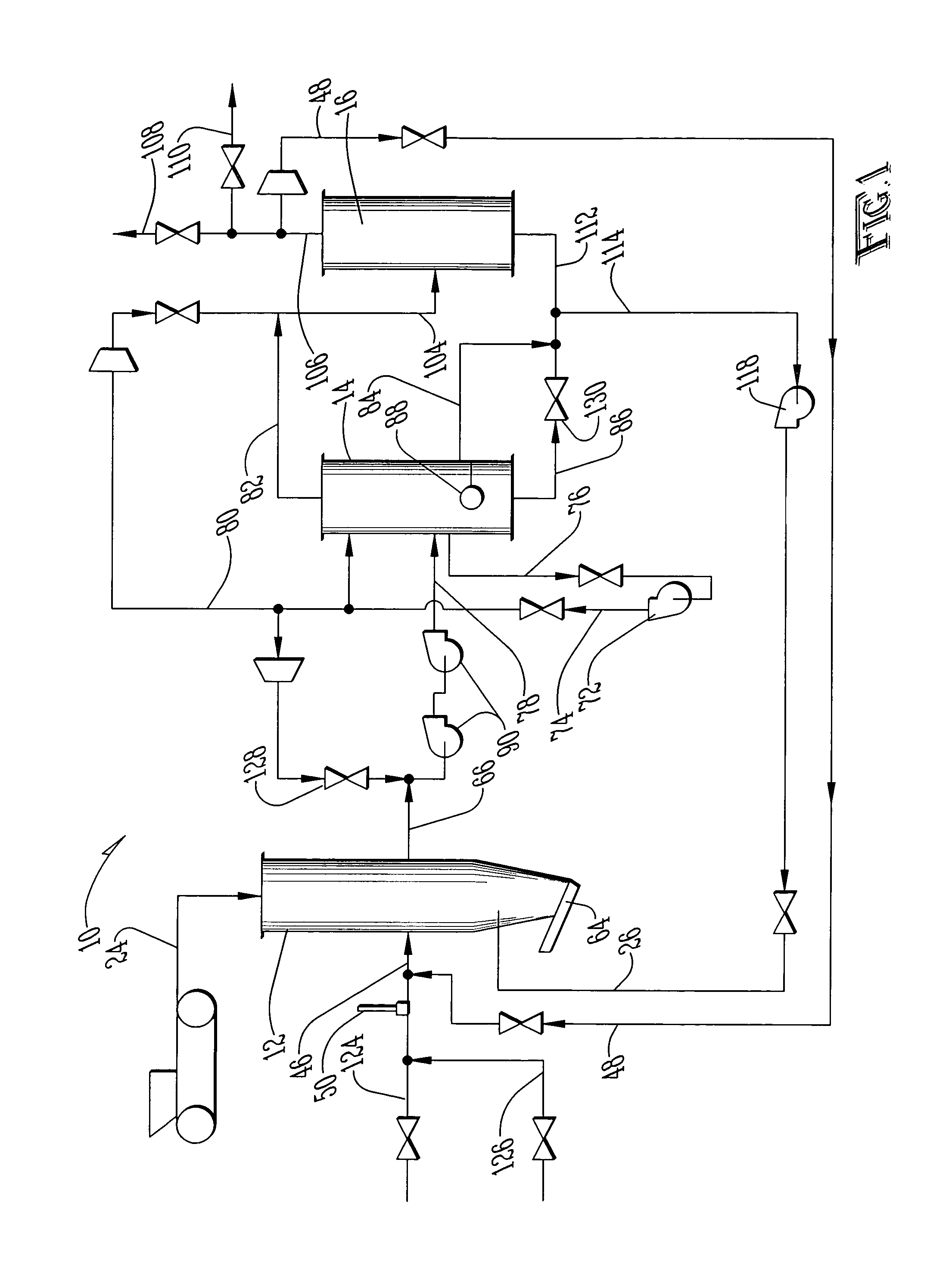Gasification apparatus
a gasification apparatus and gas technology, applied in the direction of liquid fuel engine components, chemical/physical/physico-chemical stationary reactors, etc., can solve the problems of difficult to consistently produce gases having sufficiently high heating values, the heating value of gases produced using prior art systems has tended to fluctuate to an undesirable degree, and the success of gasification is limited
- Summary
- Abstract
- Description
- Claims
- Application Information
AI Technical Summary
Benefits of technology
Problems solved by technology
Method used
Image
Examples
example 1
[0051]An emissions test was conducted on combustible gas generated by one specific embodiment of the system 10, 200 while combusting chicken litter. A sample run of approximately 60 minutes in duration was performed. Testing was performed in approximate accordance with the methods detailed in 40 Code of Federal Regulations (CFR), Part 60, Appendix A. The flow, based on the lowest recordable flow, had a velocity of approximately 6 feet per second (1.8 meters per second) and the sample collected had a volume of approximately 40 dry standard cubic feet (1000 liters). The results of the emissions testing for Example 1 are summarized in Table 1 below.
[0052]
TABLE 1Emissions inapproximatelbs / hrSubstance(grams / hr)Particulate Matter (based on lowest detectable flow rate)0.003(1)VOC as Propane (corrected for moisture)0.1(50)Nitrogen Oxides as NO20.001(0.5)Carbon Monoxide0.003(1)Sulfur Dioxide0.1(50)Ammonia0.03(10)HCl0.008(4)Chloride0.005(2)
example 2
[0053]An emissions test was conducted on combustible gas generated by one specific embodiment of the system 10, 200 while combusting paper mill sludge. A sample run of approximately 60 minutes in duration was performed. Testing was performed in approximate accordance with the methods detailed in 40 CFR, Part 60, Appendix A. The flow, based on the lowest recordable flow, had a velocity of approximately 6 feet per second (1.8 meters per second) and the sample collected had a volume of approximately 40 dry standard cubic feet (1000 liters). The results of the emissions testing for Example 2 are summarized in Table 2 below.
[0054]
TABLE 2Emissions inapproximatelbs / hrSubstance(grams / hr)Particulate Matter (based on lowest detectable flow rate)0.001(0.5)VOC as Propane (corrected for moisture)0.01(5)Nitrogen Oxides as NO20.01(5)Carbon Monoxide0.05(20)Sulfur Dioxide0.02(9)
[0055]Other modifications, changes and substitutions are intended in the foregoing and, in some instances, some features of...
PUM
| Property | Measurement | Unit |
|---|---|---|
| temperatures | aaaaa | aaaaa |
| temperatures | aaaaa | aaaaa |
| moisture content | aaaaa | aaaaa |
Abstract
Description
Claims
Application Information
 Login to View More
Login to View More - R&D
- Intellectual Property
- Life Sciences
- Materials
- Tech Scout
- Unparalleled Data Quality
- Higher Quality Content
- 60% Fewer Hallucinations
Browse by: Latest US Patents, China's latest patents, Technical Efficacy Thesaurus, Application Domain, Technology Topic, Popular Technical Reports.
© 2025 PatSnap. All rights reserved.Legal|Privacy policy|Modern Slavery Act Transparency Statement|Sitemap|About US| Contact US: help@patsnap.com



